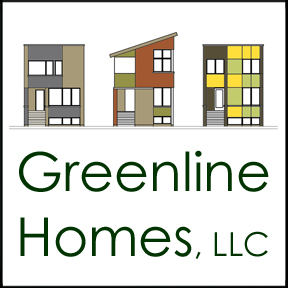Right neighborhood, right house--with a green bonus
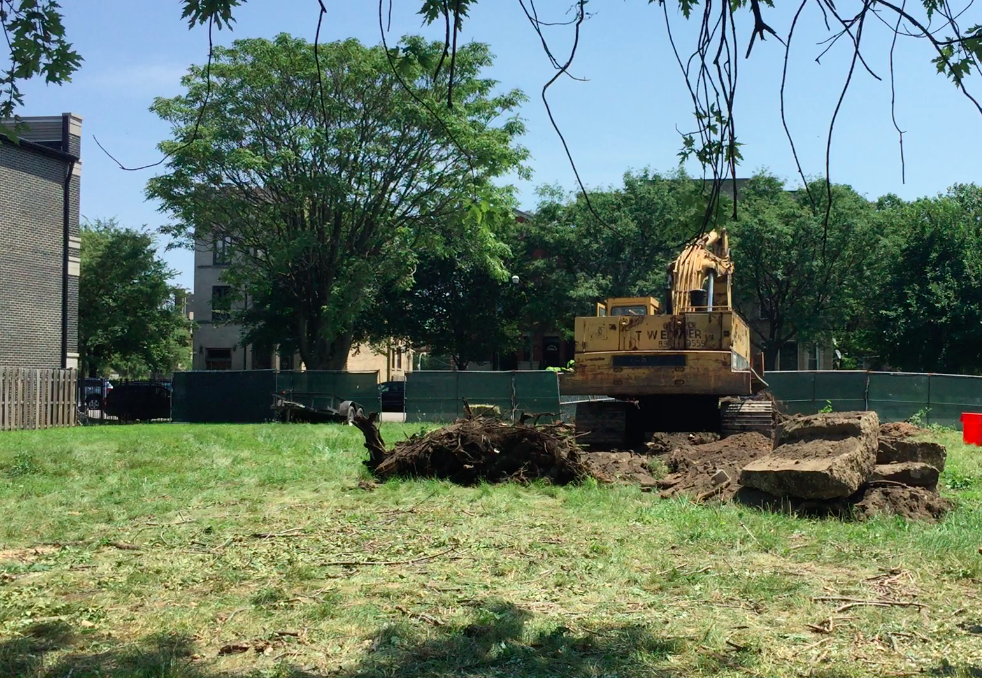
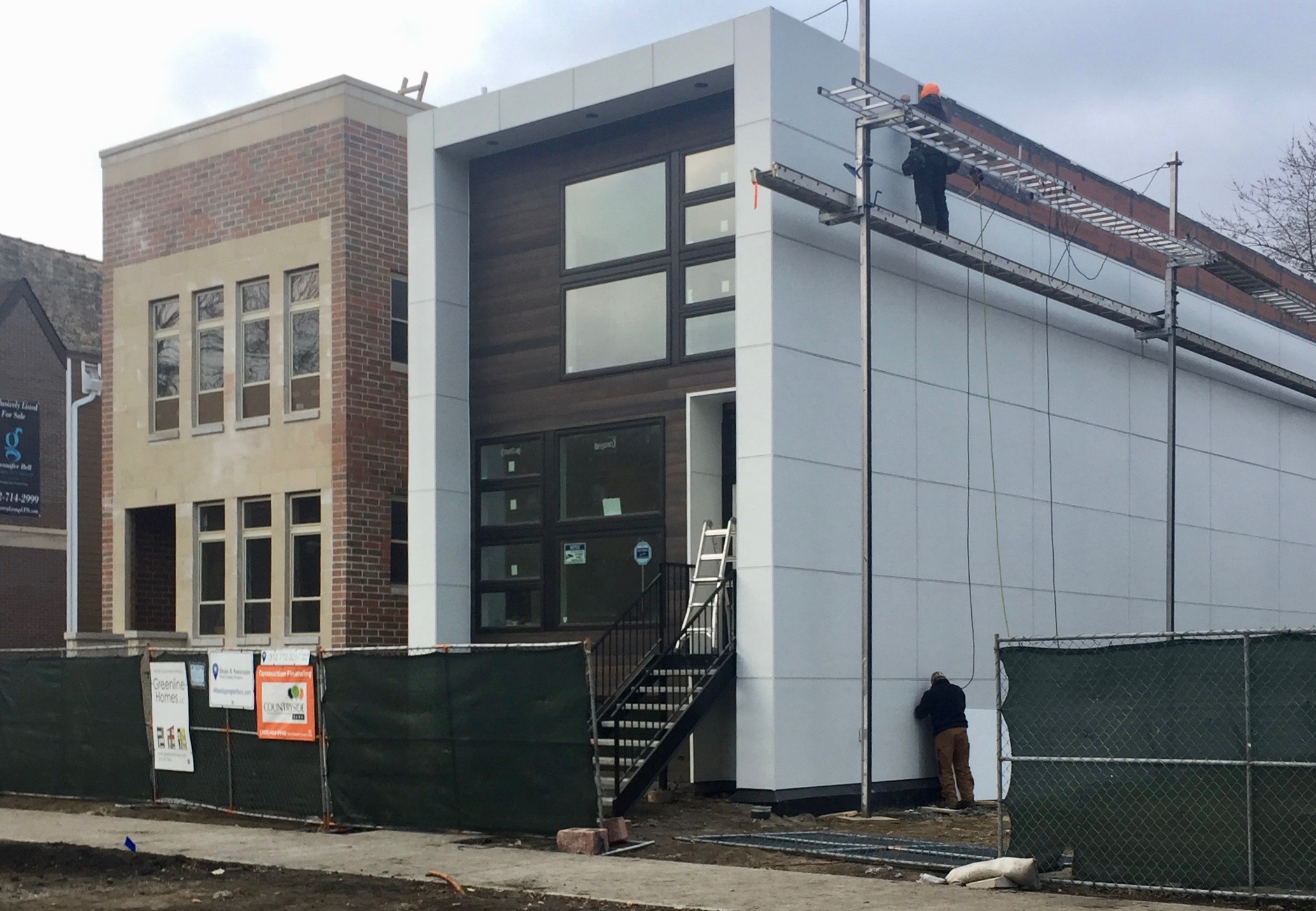
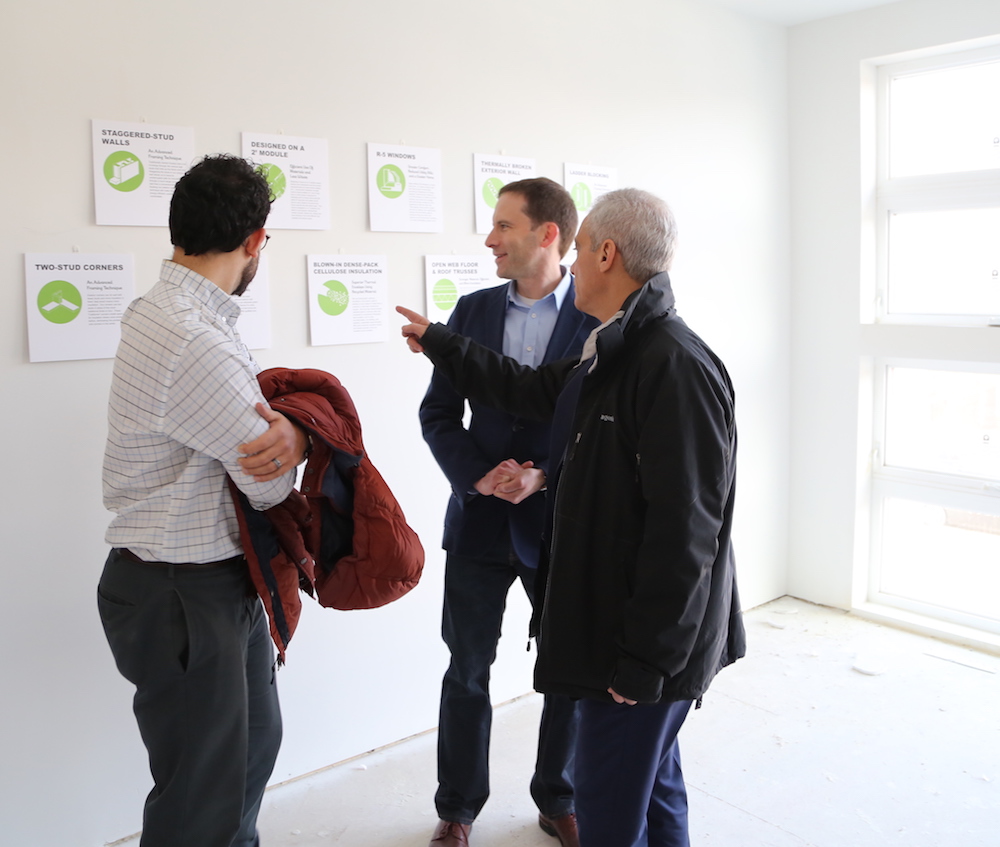
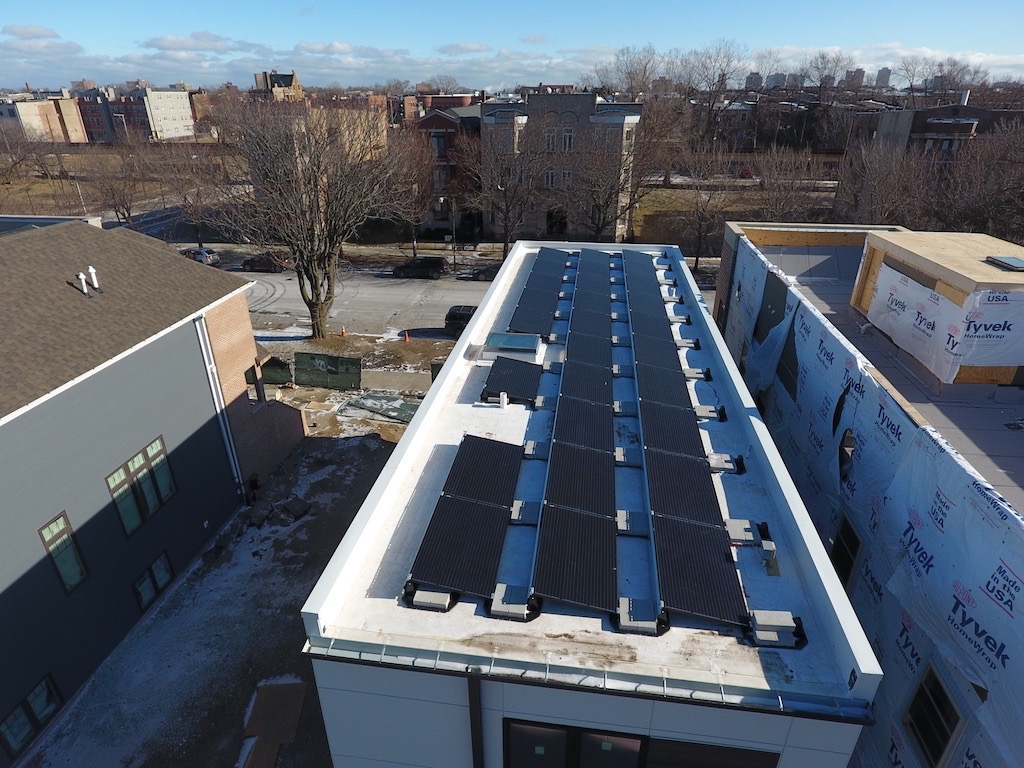
Photos: top, breaking ground in July; second, the facade of Greenline’s home on the right and a neighboring house, also built as part of the Third Ward Parade of Homes; third, Peter Salib, Benjamin van Horne, and Mayor Rahm Emanuel discussed some of the green features of the home during a tour bottom, solar panels on the roof, looking east toward Lake Michigan.
For Peter and Chelsie Salib, purchasing Greenline Homes’ first entry in the Third Ward Parade of Homes was a case of finding the right house in the right neighborhood at the same time. It came with a bonus: as a net-zero-energy home, they’ll save money on operating costs every month.
The Salibs met during high school in Batesville, Indiana. Peter went to college and later law school at University of Chicago, while Chelsie attended Indiana University, then commuted from Hyde Park to business school at University of Notre Dame.
The couple grew to love the South Side, but when they decided to look for a home, it was hard to find a house and location that worked. Hyde Park felt like a long drive from much of what the rest of the city has to offer. A place in Pilsen fell through; other opportunities in the area held little appeal. North Side communities offered less home for their money.
Publicity around the Parade of Homes and new developments such as Mariano’s at 39th and King Drive drew their attention to Bronzeville--close to downtown, a walk to the Green Line, or bike ride to the lakefront, they found.
As they looked closer, they found Greenline Homes’ entry in the Parade. Greenline is one of five developers selected by the city of Chicago for the initiative, which is jumpstarting community investment in Bronzeville. Prairie had five lots on one block, making it an excellent choice to start a project that will grow to include other new construction as well.
Greenline’s entry is a five-bedroom, net-zero-energy home that has some of our trademark features. These include solar panels and all-electric power systems. Running a home on all-electric power including for heating and cooling, has several advantages over, say, natural gas:
- All-electric demonstrates that you can have a fully-functioning, comfortable home without burning fossil fuels. If we want to draw down and start to reduce carbon in the atmosphere most houses will need to be all-electric.
- All-electric also makes the math easy as to how much energy the house is producing and how much it is using. Incorporating gas heat, for example, would then require a formula to transfer the amount of BTUs of heat output to kilowatt hours, which is a difficult conversion.
- Another positive of all-electric is that there’s no combustion in the home, meaning no worries about carbon monoxide.
While some cooks prefer gas ranges, Greenline homes generally come with electric induction-cooking appliances that meet or exceed most chefs’ standards for home cooking.
“We weren’t really looking for an environmentally-friendly home, because there’s not a lot of people building them,” Chelsie Salib says. “Our assumption would have been that it would have a huge extra cost, but Benjamin is building them for essentially what it would cost to build a traditional home of similar size and quality. it was really a no-brainer.”
In fact, when they calculated the savings they would realize on lower monthly energy costs, for example, they found they were able to afford more home than they envisioned. Upgrades will include Bosch appliances, a polished concrete floor in the basement and hardwood floors throughout the rest of the house, among other finishing touches.
“The main reason we weren’t looking for [a green home] was, we didn’t even really know it was an option,” Peter Salib adds. “Once it became clear that not only could we get this beautiful, high quality, well-built home the fact that we could have as an option for it be environmentally friendly was a bonus.”
